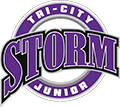Resources
Visit this page to learn about the basics of hockey such as the rules, lingo, and other useful information.
Hockey 101
Ice hockey is played on a rink, a sheet of ice, which is approximately two-thirds the size of a football field, usually 185-200 feet long and 85-100 feet wide.
The game is played in three periods of equal length; 20 minutes for each period at most levels, but often 12 or 15 minutes in youth classifications. The sport involves four basic skills: skating, stickhandling, passing and shooting. These skills can be learned at any age, and the good hockey player continually works to improve and refine his or her skills.
Physical size is not an important factor in becoming a skilled and successful hockey player. Every player has an opportunity to be a part of the action given the speed of the game, the number of players on a team and the size of the surface upon which the game is played.
1-Skating is the skill that makes hockey unique and it is something that players of all levels of the sport continually strive to improve. Without adequate skating ability, players are less able to perform the other essential skills of the sport.
2-Stickhandling is perhaps the most difficult of the basic skills to master. It allows a skilled player to maneuver around opponents and create better offensive opportunities.
3-Passing is what makes hockey a true team sport and helps make the game fun. Passing gets everyone on the ice involved in the action and turns scoring into a team effort. Helping teammates experience success is what the game is all about and passing allows the thrill of scoring to be shared.
4-Shooting is the end result of an offensive team play and is the action that produces a goal. Many players spend most of their time practicing on shooting because they believe scoring is the most fun. Players should, however, place an equal emphasis on the other basic skills of hockey, given the fact most players generally take fewer than six shots in an entire game.
